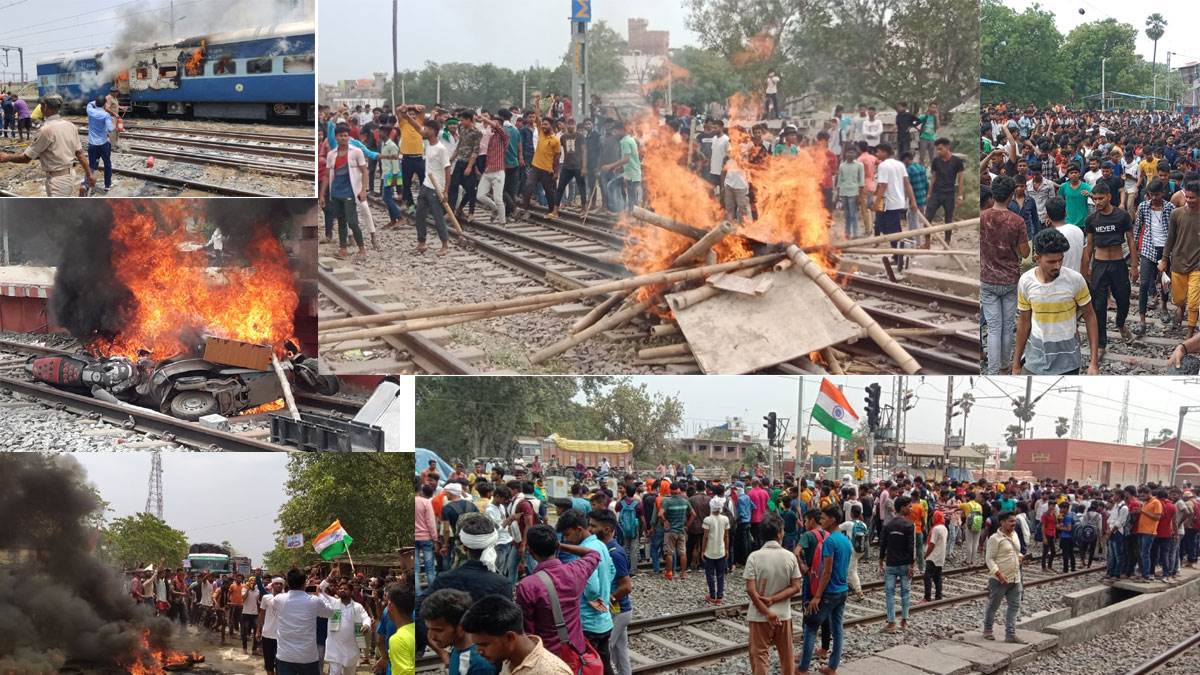Edits | July, 2022
The Agneepath scheme was announced by the Ministry of Defence, Government of India, under the aegis of Prime Minister Narendra Modi, who is now facing the next general election in 2024, which probably may be the last in his political career, as per the policies framed by him for the retirement of within the party candidature, has taken the entire nation and its youth by a jolt.
At the outset, the scheme looks attractive providing mass employment to a section of unskilled youth with a quick job. But then again it leaves them in a lurch to find the right kind of job in the long run. There has always been a short commission in the defence forces which is to attract talent and give employment. It also provides the defence forces with much-needed soldiers, falling short in numbers by the day as patriotism and the art of war have completely changed.

The problem with the Agneepath scheme lies with the exit in four years of service, for those who get employed through this scheme. This definite exit has questioned policymakers as to what a young 21-27 years ex-soldier will do after being ejected out of employment. As everybody knows, such a large population cannot be absorbed in government jobs, where the government is also fighting its own battles of lesser revenue than expenditure.
The GST Collection figures seem to be unreal and are lastly contributed by the PSUs who are government-owned entities, rather than large and small businesses. Hence to accommodate such a large population of soldiers even in the armed forces is seemingly impossible for the government to financially rationalise.
Further, the scheme of Agneepath provides that a lump sum payment of Rs 11 lakhs will be given to the candidate after the four years of service. The argument is that this may not be enough for the living and livelihood of the candidate. Further, at the end of the fourth year of service, the candidate may be re-employed by the armed forces or get preference in some other agency of the government. This is a big if and may not be practised by any of the governments, especially if the government were to change, or if it is left to the state government, for a definitive political statement by the warring parties.
The irk of the youth in this matter is driven by the factor that they have studied for the Armed Forces exams and with this new scheme, a lot of that effort is being nullified. The media is ablaze with rival political parties to the BJP and the coaching centres that prepared these kids for various competitive exams along with the exams for armed forces, instructing the students to create chaos on the streets and burnt public property to get themselves heard. They have gotten themselves heard as the government has again done the same thing that it did during the demonetization days, to come up with clarifications of the scheme. If history has it there were 77 clarifications issued for demonetization handling, after it was announced by the Prime Minister. The same is happening here as the notifications keep coming out for the Agneepath scheme since its launch. The notification document is getting larger every day, for instructions to the candidates and the department, it is only prudent to say that the government has erred and not calculated the reaction on a socialistic level. You cannot fight a war by calculating it for money- look at the Russian-Ukraine-US-Nato war for examples of how much money and resources are needed to fight one.
Congress with its Rahul Gandhi under ED investigation, being at the same time as Agneepath, it may be safely said that a lot of this chaos and voices could have emanated from there. As a counterbalance BJP has installed a large turmoil in Maharashtra with pitching to topple the government. A few hundred crores may have been spent in managing MPs, the MLAs of the state, to change the rhetoric which is being played out by the Agneepath scheme. Largely BJP will succeed as it has done earlier by taking the eye away from the media glare of a certain event. It not only shows the power of power and the power of money, and the need to remain in power, for that now is the defining line for democracy and the polity of the time.
As an ending note, in the days to come the Agneepath scheme will slowly see the resistance going away, and the government has its way of implementing it. Further, it poses a new direction for all the government departments to offer such schemes with no liability of paying pension. Perhaps the planning commission has recognised that as technology evolves, the skills needed in an area change, and then the period of employment needs to be shortened for the department to be cost-effective. But is that socialistic thinking? How the Agneepath scheme has become an Agni Pareeksha for not just the government but the socio-economic fabric of India, shall unfold in the days to come.
CA Divesh Nath
Editor
Woman’s Era
LinkedIn: Divesh Nath



